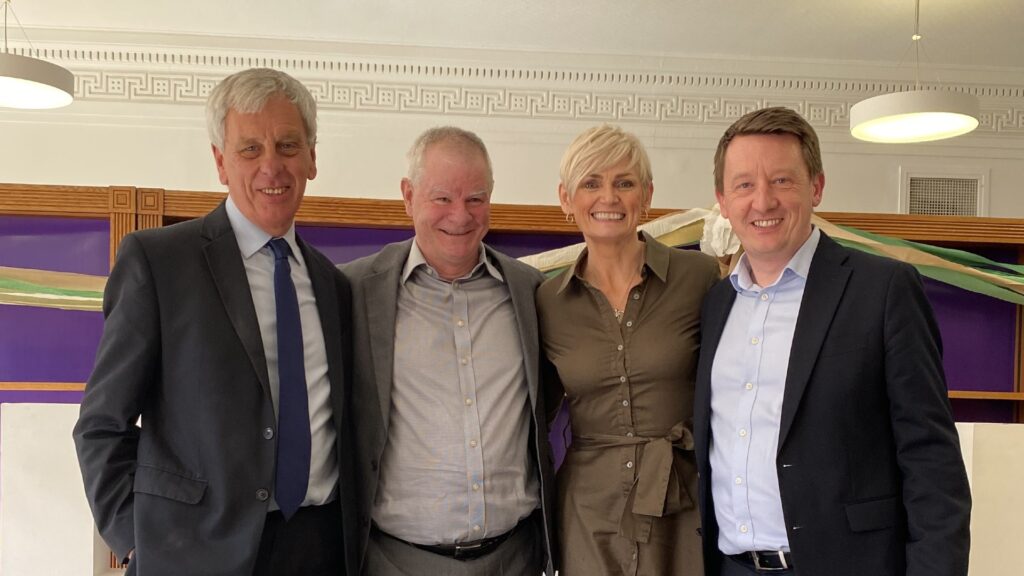Dyscalculia doesn’t just affect children’s performance in school – an inability to carry out simple arithmetical calculations impacts on everyday tasks like handling money, telling the time and reading maps, which can cause problems throughout a person’s life.
Although it’s not as well known as dyslexia, dyscalculia is thought to affect around 3 – 6% of the population. Dyscalculia is a special need that, according to the British Dyslexia Association (BDA), requires diagnosis and appropriate counselling, as well as support away from whole class teaching.
However, unlike dyslexia, opportunities for practitioners to access training and support are few and far between. The majority of courses are currently facilitated by subject experts and don’t hold any accreditation – but that is changing.
As a thought leader in Special Education Needs and Disability (SEND) education, Edge Hill University was among the first higher education institutions in the country to gain BDA accreditation for its dyslexia programmes, and is currently working towards accredited status for its postgraduate certificate in education (dyscalculia).
This pioneering CPD programme is designed specifically to give teachers and other education professionals a deeper understanding of mathematics difficulties and dyscalculia, and enable them to carry out full assessments to diagnose dyscalculia in learners across all key stages.
“The field of dyscalculia is broadening as more research is undertaken into the causes and effects of this specific learning difficulty. As more practitioners become aware of the issues surrounding dyscalculia they will need the skills and knowledge to identify learners with dyscalculia and plan appropriate intervention programmes within their settings.”
Lisa O’Connor, Programme Leader
Edge Hill’s postgraduate certificate in education (dyscalculia) students engage with the latest research on mathematics and dyscalculia, from leading experts in the field, such as Brian Butterworth, Steve Chinn and Mahesh Sharma, and are encouraged to analyse current tensions and debates around the definition of dyscalculia. They also get practical experience of a wide range of intervention approaches, including the Singapore Maths method. This combination of research and practice enables students to develop ideas that can be directly applied to their own professional context.
Ruth Rayner, a teacher from East Sussex, completed the course in 2013. She has seen her students grow in confidence and self-belief as a result of techniques she learnt on the dyscalculia programme, and has gained a renewed enthusiasm for teaching.
“The course makes you go back to basics and rethink the way you teach maths,” says Rayner. “I didn’t realise, for example, that children with dyscalculia have problems with basic number rules and procedures. They might know that 6+4=10 but not that 4+6=10 as well. These are things that most people take for granted, but if you can’t make those connections early on, you can get left behind academically. The course showed that getting those building blocks right is the key to unlocking maths for children with dyscalculia.”
Ruth Rayner
Rayner has recently started a new job as a specialist dyslexia and dyscalculia teacher at Slindon College in Arundel, where she will be putting her training into action and making a real difference to children’s educational outcomes.
“Education is evolving all the time and I believe, as teachers, we should be continually challenging our own ways of teaching,” she says. “As well as giving me a detailed insight into the issues faced by children with dyscalculia, the Edge Hill course also taught me to reflect on my own practice. Now, I constantly evaluate how and why I’m doing things, so I can do it better.
“I think every teacher should learn how to identify and work with children with dyscalculia, it’s important to break down the barriers to maths and to help all children see that maths is part of everyday life and nothing to be feared.”
Ruth Rayner
Edge Hill’s postgraduate certificate in education (dyscalculia) is open to teachers with Qualified Teacher Status (QTS), Qualified Teacher Learning and Skills Status (QTLS) or equivalent, as well as TAs or HLTAs with a degree.
Find out more about studying courses in Edge Hill’s Faculty of Education
One approach to dyscalculia intervention: Singapore Maths
In 1984, Singapore’s students were placed 16th out of 26 nations in the Second International Science Study (SISS). Subsequently they adopted a modelling approach to maths, now known as Singapore Maths. By 1995, the Trends in International Mathematics and Science Study (TIMSS) ranked Singapore’s students first among participating nations. The 2007 results also showed Singapore as a top performing nation. So what is Singapore Maths?
- It emphasises the development of strong number sense, excellent mental math skills, and a deep understanding of place value.
- It is a progression from concrete experience using manipulatives, to a pictorial stage, and finally to the abstract level or algorithm.
- It gives students a solid understanding of basic mathematical concepts and relationships before they start working at the abstract level.
It includes a strong emphasis on model drawing, a visual approach to solving word problems that helps students organize information and solve problems in a step-by-step manner. Because pupils work with concrete apparatus, they are always solving problems rather than just learning algorithms and they become good problem solvers.
August 8, 2014



